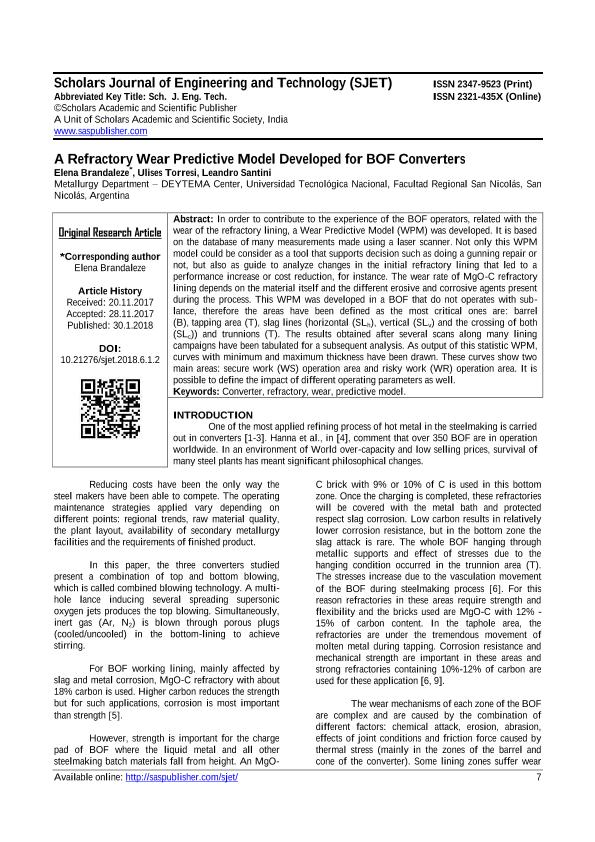Artículo
A refractory wear predictive model developed for BOF converters
Fecha de publicación:
01/2018
Editorial:
Scholars Academic and Scientific Publisher
Revista:
Scholars Journal of Engineering and Technology
ISSN:
2321-435X
e-ISSN:
2347-9523
Idioma:
Inglés
Tipo de recurso:
Artículo publicado
Clasificación temática:
Resumen
In order to contribute to the experience of the BOF operators, related with the wear of the refractory lining, a Wear Predictive Model (WPM) was developed. It is based on the database of many measurements made using a laser scanner. Not only this WPM model could be consider as a tool that supports decision such as doing a gunning repair or not, but also as guide to analyze changes in the initial refractory lining that led to a performance increase or cost reduction, for instance. The wear rate of MgO-C refractory lining depends on the material itself and the different erosive and corrosive agents present during the process. This WPM was developed in a BOF that do not operates with sublance, therefore the areas have been defined as the most critical ones are: barrel (B), tapping area (T), slag lines (horizontal (SLh), vertical (SLv) and the crossing of both (SLc)) and trunnions (T). The results obtained after several scans along many lining campaigns have been tabulated for a subsequent analysis. As output of this statistic WPM, curves with minimum and maximum thickness have been drawn. These curves show two main areas: secure work (WS) operation area and risky work (WR) operation area. It is possible to define the impact of different operating parameters as well. Keywords: Converter, refractory, wear, predictive model.
Palabras clave:
CONVERTER
,
REFRACTORY
,
WEAR
,
PREDICTIVE MODEL
Archivos asociados
Licencia
Identificadores
Colecciones
Articulos(SEDE CENTRAL)
Articulos de SEDE CENTRAL
Articulos de SEDE CENTRAL
Citación
Brandaleze, Elena; Torresi Domínguez, Ulises; Santini, Leandro Matias; A refractory wear predictive model developed for BOF converters; Scholars Academic and Scientific Publisher; Scholars Journal of Engineering and Technology; 6; 1-2018; 7-13
Compartir
Altmétricas




